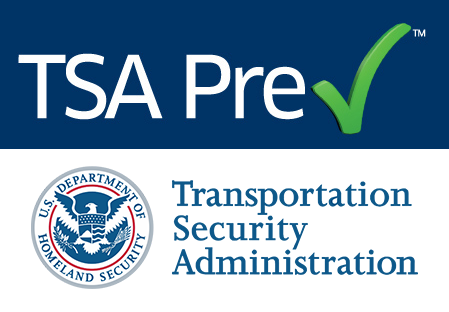TSA announced that it’s implementing stricter screening for electronics for standard security lines at airports across the country to increase baseline security. These new measures come at a time when the US DHS has forced other countries to comply with stricter guidelines for screening electronics based on reports that terrorists plan to use them in their next attack.
“TSA officers will begin to ask travelers to remove electronics larger than a cell phone from their carry-on bags and place them in a bin with nothing on top or below, similar to how laptops have been screened for years. This simple step helps TSA officers obtain a clearer X-ray image.”
It’s also possible that passengers may experience more bag checks.
The new screening procedures in standard lanes are already in place at the following 10 U.S. airports with plans to expand to all airports during the weeks and months ahead:
- Boise Airport (BOI)
- Colorado Springs Airport (COS)
- Detroit Metropolitan Airport (DTW)
- Fort Lauderdale-Hollywood International Airport (FLL)
- Logan International Airport (BOS)
- Los Angeles International Airport (LAX)
- Lubbock Preston Smith International Airport (LBB)
- Luis Muñoz Marín International Airport (SJU)
- McCarran International Airport (LAS)
- Phoenix Sky Harbor International Airport (PHX)
These policies have already been enforced to a degree at some airports around the world. I know that I’ve had to take out my camera(s) at multiple airports and put them in a separate tray from my laptop, which sounds like what is happening here.
Travelers are encouraged to organize their carry-on bags and keep them uncluttered to ease the screening process and TSA agents are supposed to be there to help guide passengers through the process by showing them how to arrange their electronics.
This will inevitably result in longer wait times, which raises another security question since it leaves more passengers exposed to a potential attack. Ultimately, the answer to long lines will likely be “tomography machines.” Tomography machines are essentially CT scans that allow officials to see high-definition, three-dimensional views of the contents of any bag, electronic device, or bottle of fluid.
These are far superior than X-ray machines as it’s possible to see far more detail and thus easily detect more objects. Since these machines can detect details in electronics and liquids, passengers may not have to take those items out of their bags, which means lines will be shorter. These machines are very expensive, however, and still might require further testing. So until then we’re stuck with what he have.
TSA Pre-Check not affected
The great news out of all this is that if you’re a TSA Pre-Check member, you are not affected by this new policy.
Final word
While I don’t like seeing the passenger experience becoming more stressful for the masses, I’m a big proponent of security and heightened screening makes much more sense than banning laptops and requiring them to be placed in the cargo hold. Hopefully, we’ll soon see a transition to more advanced equipment like the tomography machines that will result in more effecient lines for everyone, while offering even better screening possibilities.
Daniel Gillaspia is the Founder of UponArriving.com and the credit card app, WalletFlo. He is a former attorney turned travel expert covering destinations along with TSA, airline, and hotel policies. Since 2014, his content has been featured in publications such as National Geographic, Smithsonian Magazine, and CNBC. Read my bio.

